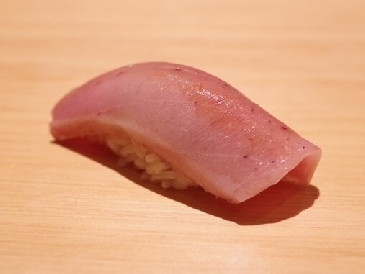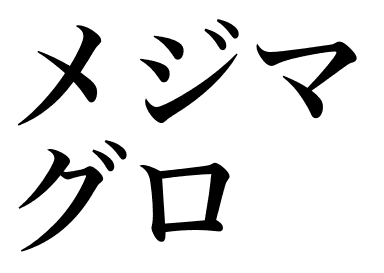Red flesh


Young bluefin tuna (Meji-maguro)
【Nigiri sushi: Akami】
While there is no clear standard, young Pacific (Kuro maguro) that are 20 kg or lighter is called Meji-maguro or Meji. In the Kansai region, it is called Yokowa. Meji maguro, like adult bluefin tuna, is also available in parts ranging from akami to otoro.
Although still immature, the taste of the fat that thinly lines the stomach meat is neater and seems like better quality than the adult fish. It also has the sourness unique to Tuna and tastes far better than Tuna that has been poorly frozen. Especially Meji-maguro caught in fixed net fishing is one type of sushi topping that you really should try. The market receives a large inventory of this Tuna that weighs between 2 to 5 kg and the bigger it is, the fatter and better it is.
Its season is early summer, just when the Pacific Bluefin Tuna taste loses its luster. However, some people find the fat to be light without the impact of the fatty Pacific Bluefin Tuna. Efforts are put into seasoning to avoid this. Using a pinch of ginger, Japanese basil, or onion between the topping and rice, along with the wasabi, really brings out the fresh flavor of the young fish as well as the sweetness of this fatty part.
Not only at sushi restaurants, but also at Japanese restaurants, Meji maguro is often served as sashimi, where its flavor can be felt. This is because the taste of Meji maguro is lost in the strong flavor of sushi rice when it is made into nigiri sushi.
To balance the flavor of the tuna with the sushi rice, sushi chefs lightly grill the tuna over a roaring straw-fueled fire and then soak it in soy sauce. When you put it in your mouth, the aroma of the straw-roasted fish and the taste of the split soy sauce spread out, and then the original flavor of the meji maguro gradually comes out.
Related contents:
What are Meji, Chubou and Maguro?
(Revision date: December 29, 2023)
Season
Early summer

